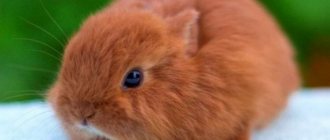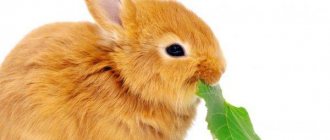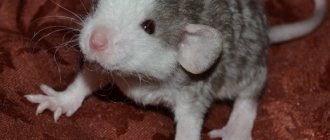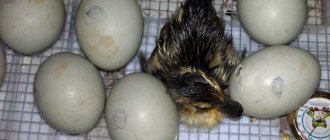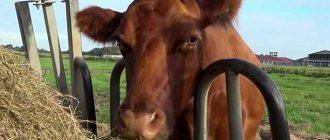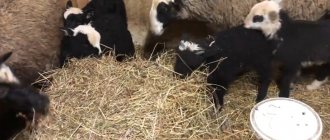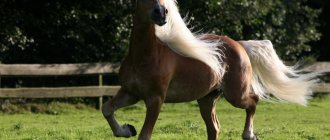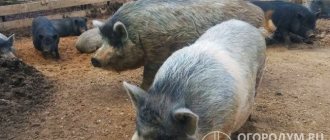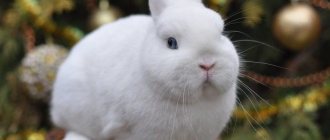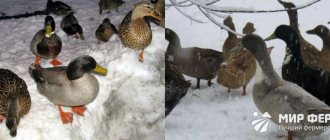Historical reference
The first mention of the ferret is found in the works of the Greek satirist Aristophanes. He lived from 448 to 385. BC e. and in his plays he described a certain marten-like animal that was a pet. Another Greek historian, Strabo, described the fret's hunt for rabbits that flooded the Balearic Islands. There is also evidence according to which Genghis Khan himself in the 13th century, while in Afghanistan, used ferrets for hunting.
These miniature charmers began to appear en masse in Russian families relatively recently. Just 15 years ago, even in Moscow they were absolutely exotic, not to mention the provinces. At the same time, domestic ferrets became widespread in the West about 40 years ago, where they constitute significant competition for hamsters, guinea pigs, ornamental rats and other small animals traditionally kept as pets. Ferrets have become especially popular in North America, as well as in Japan.
Ferret as a pet
The domestic ferret or, as it is also called, ferret or furo (from the Latin Mustela putorius furo - thief or cunning) is a small, squat animal of the mustelidae family. The body of a domesticated ferret is flexible and elongated, with a long tail, thick fluffy fur and charming beady eyes. Smart and cunning, but incredibly friendly animals as pets have gained popularity all over the world.
| How long does a domestic ferret live? | From 8 to 12 years. The maximum lifespan of a pet is up to 15 years. Life expectancy largely depends on genetic predisposition, nutrition, maintenance and care of the animal. |
| Does a ferret smell bad? | People mistakenly consider the ferret to be almost smellier than a skunk. Indeed, the anal glands of an animal in a stressful situation are capable of releasing an unpleasant, pungent odor. But the ferret uses them only in exceptional cases: when all other methods of protection have been tried. In any case, the smell is easy to remove, unlike cat marks, for example. Prianal glands can be removed surgically, but this can negatively affect the pet's health. Ferret excrement and urine have almost no odor. |
| Does the ferret bite? | The sharp teeth and claws of the animal are quite dangerous for humans. Moreover, furo is very vindictive, and he has a fairly strongly developed “wild” perception of the world around him. The pet is especially aggressive at night. It's not difficult to stop your pet from biting. He is just as susceptible to education and training as dogs. |
| What is the price of the animal? | You can purchase pet-class furo at a cost from 1 thousand (from hands) to 5 thousand rubles. When buying an animal from someone else, remember that it may be sick and soon die. Ferrets from nurseries are more expensive: breed class from 8 to 12 thousand rubles, show class – from 12 to 18 thousand and more. |
| What to feed your ferret at home? | The ferret is a carnivorous animal. In the wild, it feeds on insects and small animals: frogs, mice, birds. Therefore, at home, your pet needs mixtures of meat products or special ready-made food, which can be purchased at pet stores. Some ferrets love natural food: vegetables, meat, fish, eggs, cereals. Sweet, salty, fried and other foods from the human table are very harmful to the animal. |
| Who is this pet suitable and not suitable for? | Keeping a ferret is akin to caring for a dog. The animal is suitable only for a responsible and experienced animal lover, active and energetic, ready to sacrifice sleep or comfort for the sake of the pet. And also to those who have the time and financial resources. |
| A bad choice for older people, families with small children (under 7 years old), or people who are constantly on business trips. You should also not keep a ferret in a house where there are burrowing hunting dog breeds (for example, dachshund). Another “bad neighbors” are birds, reptiles or rodents. Sooner or later, the cunning ferret will find an opportunity to get to your pets and feast on them. | |
| How does the ferret treat children? | You should not leave the ferret alone with small children. Even a friendly animal can painfully bite a child during play. |
The ferret is not a member of the rodent family, like hamsters or mice. Moreover, the latter are the food of the ferret. In their behavior and physiology, representatives of this species are much closer to dogs and cats.
External data
Distinctive features of the fret:
Character
Domestic ferrets are sometimes called furo, which means “thief” in Latin. And this fully reflects their character. Ferrets are smart, quick-witted, and prone to theft. They love to steal and hide various items that might interest them. If you are thinking of purchasing a ferret as a pet, then you should consider their passion for kleptomania.
Fretka can steal your things and store them in the most unexpected places, so especially valuable ones should not be left unattended. Ferrets are beggars and skilled actors. They will do anything to achieve their goal.
It is also worth considering that ferrets are nocturnal animals. They sleep during the day, but at night they will be active, preventing you from sleeping. This problem worries many owners of these interesting animals.
In the wild, ferrets live in burrows, so digging is one of these animals' favorite pastimes. Unfortunately, pets also have such habits, so you should hide flower pots from them.
Choosing an animal and preparing for its appearance in the apartment
When choosing between a male and a female, one must take into account that male ferrets are larger, more attached to the owner, but at the same time more aggressive during puberty.
Female ferrets are smaller and easier to train, but they are also much more curious and independent. You can ask breeders in advance to send photos of ferrets in order to choose the baby you like. When the owner goes home with his new little pet, everything should already be ready.
To avoid any surprises, before entering the apartment, some manipulations are performed:
- They check if there are any cracks or holes where the animal can climb; if there are any, they are plugged with something or nailed down.
- Remove all pots with indoor plants as high as possible.
- Move away from the windows all objects on which the animal could climb onto the windowsill - this is done so that the pet does not break if it accidentally falls out of the window (anti-mosquito nets do not help, it is better to install a metal one).
- Close the holes under the balcony railing and place a net on the doorway leading to the balcony.
- All wires are insulated or lubricated with a special safe but bitter paste against rodents.
You also need to prepare a sleeping place, tray, feeding bowl and drinking bowl in advance. It is better to put a mesh in a tray with a high side, since the filler will be immediately excavated.
The drinking bowl and feeding bowl should be heavy enough so that your pet cannot carry them. The sleeping place can simply be a small mattress or (which is preferable) in the form of a hammock.
Keeping a ferret in an apartment where there are other pets or small children
Many people wonder whether it is possible to keep a ferret in an apartment with cats, dogs and other animals? We can immediately answer that small rodents and birds are not the most suitable neighbors for ferrets, since he can simply eat them. If, after all, the animals are in the same apartment, then it is better to separate them into different rooms or place cages with potential victims in places that are difficult for the ferret to reach.
Ferrets have different relationships with cats, it depends on the character of both. In any case, you need to pay equal attention to all pets so that jealousy does not arise. The best neighbors for ferrets are large dogs of non-hunting breeds. They can become good friends and even sleep in the same place.
As for the relationship between small children and ferrets, certain rules must be followed:
- Children and animals should play only under the supervision of adults, so that the behavior of both can be monitored.
- If there is a child under 5-7 years old in the house, then it is better to get a female ferret; she will be more relaxed about the baby’s active games.
- You should not let a child walk alone with a ferret; the animal is very nimble and can easily break free and run away. It is imperative to explain to children that the ferret will perceive any loud and sharp sound as a threat and will begin to attack; ferret bites are very painful.
Otherwise, if the child is understanding, responsible and not prone to aggressive behavior towards animals, then he and the pet can become best friends.
Toilet arrangement
A domestic ferret, like other animals, must know a place for a toilet. It should be done in his cage. The toilet is placed in the corner so that it does not interfere with the animal’s active movement around its home, playing and sleeping.
For the toilet, you can use a tray that is used for cats. Moreover, it does not matter at all what size this item will be; what is more important is that your pet can quickly get used to it. It is better to secure the tray so that it does not move. It is convenient because it has a mesh on top, for this reason, after doing all the necessary things, the pet will not get its paws dirty and will not spread dirt throughout the cage. If desired, you can add special fillers to it. The tray and fillers can be purchased at almost any pet store.
What is needed to keep an animal
Before you get this pet animal, you need to prepare everything in the apartment for its occupancy and create comfortable conditions for its existence. It is imperative to know how to care for a ferret. It is important to ensure that there are no open cracks or holes in the room. Access to balconies and window sills is also undesirable, because the ferret is not adapted to objectively assessing height due to its poor eyesight.
Ferrets are inquisitive and active, interesting to watch, but their character deteriorates during puberty (at 6 months) and during the rut, which for males occurs from December to August. Sexual hunting of females lasts from February to July. To prevent a pungent smell from hanging in the house, and to make the ferret happy and sociable again, he is castrated.
Cell
The animal’s home must meet certain parameters so that keeping ferrets is only a joy for you. The animal loves space and is a real fan of houses and hammocks. The dimensions of the cage should be a cube measuring 80 by 80 cm. If the ferret feels free and comfortable in the cage, joyfully moving around it, then everything is in order with its dimensions.
And if you see that the ferret is crowded and cannot find a place for himself, come up with something else. Usually the cage contains a simulated hole, which closes the animal from human view and allows it to retire. You can build a hole from old rags. He also loves oblong pipes and dark cardboard boxes.
In addition, the pet’s home usually contains a toilet, a bowl of food, a drinking bowl and the forest animal’s personal toys. The preferred material for the cage is construction mesh. The ferret will not be able to break his teeth on it if he suddenly decides to gnaw on the cage.
Toilet
Caring for your ferret necessarily includes taking care of its personal hygiene. In the apartment, as usual, a cat litter box is used as a toilet for pets. It can be of any shape and size, the main thing is that your pet is comfortable and uses it for its intended purpose. It is advisable to secure the toilet firmly.
Upbringing
When raising a ferret, do not forget that it is considered a very smart and quick-witted animal. They are much smarter than dogs, but at the same time they do not have loyalty, in this they are similar to cats. They will obey you in everything, they will close the door in the cage behind them, cover the house with rags, but at the same time they will not bring slippers to their owner, because they consider this a pointless activity.
Raising ferrets should consist of the following rules:
- litter box training;
- the pet must respond to its name;
- weaning off climbing on tables;
- they should not bite;
- knowing your place.
If the animal is afraid of you and moves away, then you need to pick it up gently and gradually, the animal should get used to it. In these cases, the following recommendations will help:
- At first, give him treats. He must take them himself and put them in a secluded corner;
- You should not pick up an animal, especially if you do it unexpectedly. This can scare him;
- You need to talk to him kindly, soothingly and very quietly so that the pet can feel cared for and completely safe;
- Small ferrets can be held while they sleep. It will be good if he wakes up in your arms, while you pet him and treat him with a tasty treat, this always gives good results.
Ferrets are pets whose care and maintenance should be entirely consistent with their physiological needs. It is important that the pet feels safe, which is why it needs care and affection at first. For this reason, completely arrange his home, place all the necessary items in it (house, drinking bowls, feeders, tray). Also organize proper nutrition and regular hygiene.
What to feed your ferret
Proper balanced nutrition is the most important factor influencing the well-being and health of a ferret during home care. Most diseases in these animals are associated with poor nutrition. Adult ferrets are usually fed twice a day, growing ones more often - up to 3-5 times a day.
Three ways to feed ferrets
There are three ways to organize meals:
- Maximum imitation of the natural diet. The ferret is given whole carcasses of mice and chickens. Obviously, this is not the most suitable option for a city apartment. Especially considering that the dining area will have to be thoroughly cleaned every time. Well, if you have a white ferret, he will quickly get dirty.
- Using regular products. Most often, owners feed ferrets with ordinary foods that can be bought at the grocery store - various types of poultry meat (chicken, turkey, duck, etc.), as well as organ meats, fish and a small amount of vegetables and cereals. Eggs and cottage cheese are allowed, but ferrets should not be given any other dairy products. It is also unacceptable to add fatty, smoked, fried, sweet, nuts, flour and bakery products to ferret food. The ferret cannot digest these foods in principle. You should not give vegetables and fruits high in coarse fiber.
- Diet based on special ready-made feed. Since ferrets are no longer uncommon in Moscow and other large cities, you can find specialized food mixtures for ferrets in most large pet stores. They already contain everything necessary for a balanced diet for the animal, which greatly simplifies its care. However, you should be prepared for the fact that such food will not be so cheap.
Changing the diet for a ferret is a lot of stress, so experts do not recommend doing this. If you decide to feed the animal with dry food, then it is better to do this from the first appearance of the pet in the house.
What kind of food should you have?
If you decide to keep a ferret in your apartment, then be sure to consider the feeding habits of this animal. This is one of the important conditions for the healthy existence of this animal. The well-being of the pet, as well as its vitality and energy, will depend on a properly formulated diet.
The following foods must be present in a ferret's diet:
- Dry feed mixtures. Balanced feed is required to fill the animal’s body with vitality. They can be purchased at any specialized store;
- Raw food. You should be especially careful with this food. Choose your meat carefully. It is better to buy it from a trusted seller, this will help avoid infecting the animal with parasites;
- Minced meat porridge.
If you have not yet lived with a ferret in an apartment, and you have never had this animal, then you should start feeding with dry mixtures. Even cat food is suitable for them. You should first study the composition and description of the feed mixture. You can also use reviews that are available in large quantities on the Internet.
The ferret eats in small portions, but often. He should eat up to 7 times a day. It is imperative to monitor its nutrition, and also do not forget to add water to the drinking bowl.
Reproduction
Ferrets' bodies begin to prepare for mating towards the end of winter. In spring, the gonads of animals increase in size. In males you can clearly palpate the testes, but in females the loop (the edge of the urogenital opening) swells.
Ferrets are mated approximately 2-3 weeks after the female’s loop begins to swell. At this time, the male should already have enlarged testes, otherwise during mating he will not be able to fertilize the female.
If a male and a female are kept in the same cage, then their mating can occur before the female’s body is ready for it. In this case, the ferret will give birth to only 2-4 cubs. If mating occurs on time, up to 10-12 chicks may be born.
The duration of a ferret's pregnancy is 42-44 days.
The female and male must be left together for three days. If fertilization is successful, after a few days you will notice how the female’s loop decreases. Later, the female will develop a belly and swollen nipples.
Approximately 3 or 4 weeks after the mating has been carried out, the female, if there are other ferrets in the house, is placed in a separate cage, which is equipped for future ferrets. If your ferret is unable to give birth on its own, you should seek help from a veterinarian.
Nail trimming
Ferrets' claws grow quite quickly, so they need to be looked after. Special nail clippers, a file and good lighting will help you in this matter. In order not to touch the blood vessel of the claw, you only need to cut off the hook growing downwards. If you accidentally touch a vessel, you should press a cotton swab moistened with an iodine solution to the damaged claw.
It is more convenient for two people to trim a ferret’s claws: one person holds the ferret, the other trims the claws. But it’s really possible to do this alone, distracting the animal with treats. You can lay your ferret on his back, spread vitamin paste on his belly, and trim his nails while he licks his belly.
Hygiene procedures for ferrets
Despite the fact that the ferret does not harm curtains and wallpaper with its claws, trimming its claws is mandatory. The fact is that overgrown claws are an obstacle to unhindered movement.
If the animal lives in nature, then it constantly grinds them down in the process of digging holes. But your pet doesn’t even touch the ground, so in an apartment this must be done manually. The frequency of the procedure is once every three weeks.
Ferrets enjoy water treatments. The animal should be washed depending on the degree of contamination of its fur, but usually this is once or twice a week. It is more advisable to use a special shampoo for these animals, as it kills the specific odor that the ferret’s sweat glands secrete. But if you can’t find it, then buy a regular children’s one.
Ferret and children
If you have small children living in your apartment, then you should not buy a ferret. Children often perceive animals as toys, and while cats and dogs are often calm about children and their concerns, ferrets can react aggressively and unpredictably to such situations.
Diseases
The following diseases are characteristic of furo:
Infectious:
- Flu.
- Plague of carnivores.
- Rabies.
- Aleutian mink disease or viral plasmacytosis is a severe and difficult to diagnose viral infectious disease, is rare, affects the nervous system (incurable, there is no vaccine).
A domestic ferret must be regularly vaccinated against plague and rabies, otherwise the animal may die.
Non-communicable diseases:
- Rickets is usually caused by poor nutrition and is more common in puppies.
- Hypovitaminosis and avitaminosis can be caused by an incorrect diet.
- Hyperadrenocrticism is a severe disease of the adrenal glands.
- Aplastic anemia - develops in females in heat in the absence of mating.
- Eosinophilic gastroenteritis - occurs as a result of excessive feeding of plant foods.
- Congestive cardiomyopathy is a disease of the cardiovascular system caused by a lack of the amino acid taurine in the ferret's body.
- Urolithiasis is also caused by an excess of plant foods in the diet.
- Stomach ulcers - causes: stress and poor diet.
- Urocystitis is an inflammation of the bladder (occurs as a result of hypothermia).
- Cataract is a hereditary, post-traumatic or old-age disease.
- A prostate cyst or abscess is common in castrated males after two years of age.
- Skin tumors, including malignant ones.
- Cancer of the lymphatic system.
- Insulinoma is the formation of excess insulin in the blood, which leads to hypoglycemia (low glucose levels).
Parasites:
- Otodectosis (ear mites) is a non-contagious disease for humans, transmitted through contact with a sick animal.
- Fleas – The ferret can be attacked by dog, cat fleas or human lice.
Vaccination done on time is the only way to avoid dangerous diseases. And even if no one walks with the ferret on the street, the virus can be brought home on shoes or clothes.
Animal vaccination
The first vaccination is usually carried out by the breeder immediately after the birth of the animal. These are types of vaccinations such as vaccination against plague and rabies. For the sake of safety, every animal is required to be vaccinated, even if you intend to keep it in an apartment for the rest of its life. Typically, dog vaccines are used to vaccinate ferrets.
If your pet is sick, do not rush to vaccinate him, but wait until he recovers. The same applies to estrus, pregnancy and lactation in females.
Before vaccination, it is important to cleanse the ferret’s body of helminths and check its fur for fleas and ticks. Vaccination against plague is carried out at the age of 4-6 weeks, and against rabies - at 12-14. Be sure to get your pet a passport, because without it, the entire vaccination history will be lost. Information about vaccinations will be needed in case of pet illness or during routine veterinary examinations.
In the first days after vaccination, it is necessary to protect your ferret from colds, avoid walking outside, and do not allow your pet to interact with unvaccinated pets. After the period of time specified by the doctor, immunity will be formed, and then the animal will be able to fully enjoy its life.
FAQ
- How often can he be bathed?
Maximum – 1-2 times a month. No detergents or shampoos. Just let the animals splash around in a shallow bath.
- How often do you change bedding in cages or enclosures?
The ideal option is once a week. Fungi grow in wet litter. These are plants that reproduce asexually (by spores); they will quickly fill not only the animal’s home, but also your home. Fungi cause allergies and diseases in animals and people. Trays and feeders must be cleaned every day.
- What to do with sharp nails and fur all over the house?
The ferret's claws are trimmed regularly, this is done with a special tool: seek help from a veterinarian. The pet sheds its fur only during the molting period. If you notice clumps of ferret hair, comb it thoroughly with a firm comb to remove old hair. Carry out this procedure once every two days, and you will forget about the wool in the house.
How to train to the tray
Accustoming a ferret to a tray
For a ferret, purchase a special tray with a grid, which is screwed to the wall of the cage.
To get used to a certain place for the toilet, the animal is temporarily locked in a cage, leaving it with a drinking bowl, feeder and tray.
The ferret is a notorious cleaner and will not defecate in the place where he drinks and eats, so he will have to run to the litter box.
Such accessories need to be washed frequently so that the animal does not start defecating wherever it wants.
If a pet is caught in the act of committing a crime, it must be immediately scolded and placed back in its cage. For the convenience of the ferret, trays are placed throughout the apartment so that he can defecate without interrupting his games.
Even adult individuals may not reach the tray if they are interested in a new toy or are very frightened.
Buying a ferret - tips!
Choosing a pet is not an easy task, because, in addition to its innate qualities, it will have an individual temperament that the owner will have to take into account. Of course, you can bring home a one-month-old puppy, but breeders recommend purchasing older animals when they are 2-3 months old. During this time, the mother manages to teach the cub minimal survival skills, and it is much easier for it to learn from new owners.
Of course, the appearance of the ferret is also important. A healthy pet has smooth, shiny fur (without bald spots), elastic whiskers, a moist nose and clean (no discharge) eyes. In general, the puppy should give the impression of being cheerful and slightly well-fed. You should also decide on the sex of the ferret: its behavior and dimensions (in adulthood) depend on this.
Important! Males tend to be larger, more aggressive and less trainable. Females are noticeably more docile and independent, although they cope with their sexual instincts worse than males.
It is better to sterilize both male and female animals (if breeding is not planned).
How long do ferrets live?
This is one of the most controversial issues, since different sources are based on different data. It is believed that a wild ferret lives on average 2-4 years. However, we can say with all confidence that the reason for such a short life span is the numerous dangers and hardships of forest life.
Domestic ferrets live in completely different conditions, where they are not threatened by predators, cold, or hunger. The lifespan in an apartment with proper care is 5-7 years, some individuals live to a ripe old age - 8 or even 10 years. However, everything here very much depends on proper care and nutrition.
There are reliably documented cases where a ferret at home lived to be 15 years old. But, unfortunately, there are also many cases when, due to the careless attitude of the owners, animals die at a young age.
Taking care of your pet's health
To keep a ferret at home, you need a special first aid kit. It should contain not only antiseptics and dressings, but also petroleum jelly, which should be fed to the pet with food if it suffers from constipation or vomiting. In addition, fill with emergency aid supplies:
- sorbents for intoxication: activated carbon, Enterosgel;
- Smecta;
- 5 percent glucose;
- BF-6 glue to treat wounds;
- antiparasitic and anthelmintic drugs;
- eye drops BARS and Furacilin to wash the eyes.
The cause of health problems in ferrets is most often poor nutrition. Breeders do not advise you to start treating the animal yourself; in this case, you should definitely contact a veterinarian.
Ferrets are unique pets that can bring you a lot of joy. Now you know what to do to make the animal feel comfortable and healthy.
Wild ferrets - domestication
Is it possible to catch a ferret and tame it? In short, you can catch it, but it’s unlikely to tame it. Ferrets have a centuries-long history of domestication, during which their natural aggressiveness decreased, and their trust in people, on the contrary.
Keeping a ferret caught in the wild is a troublesome task, from regular bites to a diet that is as close as possible to the natural one for a given individual.
In any case, if a ferret is caught as an adult, it will forever remain either excessively timid or aggressive. If we are talking about a puppy, there are options, but he will not become as affectionate and kind as a pet.
Features of walking with a ferret
Walking your ferret outside is optional, but it will provide him with a lot of fun. Natural curiosity takes over, and the animal sets off on a real little journey. Therefore, he must be walked only on a leash.
You need to walk your ferret in a harness
You need to accustom your ferret to a harness while still in the apartment. To do this, wear a leash every day and walk your pet around the house for a few minutes. Then the wearing time gradually increases.
Important! If your ferret flattens himself to the floor and refuses to walk, the harness may be too tight. The optimal tension is when 2 fingers fit under the strap.
It is better to refrain from walking in the following cases:
- If it's hot outside. Ferrets do not tolerate heat well and can get sunstroke. Therefore, it is better to take walks in the evening.
- If it's slushy outside. Neither you nor your pet will enjoy such a promenade. The ferret's fur will become dirty and wet, exposing him to illness or hypothermia.
But winter walks are a special joy for the animal. The restless ferret will enthusiastically dig holes in the snow and tinker in the snowdrifts. However, the animal must be accustomed to such temperature changes gradually. Walking in the fall, the ferret's fur becomes thicker and fluffier. It is best to go out into the cold for the first time for 5-7 minutes, no longer. Then the duration of the walk can be gradually increased.
Walk
There is no need to walk your pet ferret. Despite this, this process will bring a lot of positive emotions not only to him, but also to you. You can walk with a ferret even in winter: its fur protects it from the cold, but walking in rainy weather and slush is not recommended, because the animal can get wet and catch a cold.
When walking your ferret, you should consider the following features:
- You can only walk your ferret using a harness.
- The animal must have all necessary vaccinations
- A ferret's curiosity can lead it to danger. Be attentive and careful, do not let him come close to the dogs.
- Ferrets do not like heat or direct sunlight.
Let's sum it up
When getting a ferret, you can count on the following advantages. This is an animal that doesn't let you get bored. This is an active and cheerful creature with high intelligence that can be taught anything you want. An undoubted advantage is the compactness of the animal. It can even be placed in a regular bag if you need to go to the vet.
These animals do not need walks like dogs and use litter boxes well. And if you wish, you can always take a promenade, the main thing is to buy a good harness. He easily accepts the rhythm of life of his owners and will not make noise at night, although this is his natural schedule in nature. Finally, ferrets are hypoallergenic, which is important to many people today.
But apartment living also has its downsides. Ferrets tend to mark their territory, as a result of which an unpleasant odor becomes firmly established in the apartment. In addition, specific glands of the animal can also emit an odor, which are activated, however, only under extreme conditions.
These animals have a huge tendency to dig holes, and will use all options, including trying to dig a hole in the sofa. It is almost impossible to wean pets from this. Nimble and nimble, they constantly get underfoot, and in addition, they tend to chew and spoil things.
So should I buy it or not? The choice is yours.
Pros and cons of keeping trochees at home
Breeders of ferrets claim that the amount of positive emotions from interacting with these funny animals is worth the time spent on training and taming them. Frets have a number of advantages when maintaining a home:
- ferrets are clean,
- smart and trainable,
- compact size - do not require much space for storage and transportation,
- do not require special care,
- quickly get used to walking on a harness,
- delight owners with a playful character,
- hypoallergenic,
- get along well with pets,
- not aggressive.
In the reviews you can find several disadvantages of keeping ferrets at home:
- unpleasant odor of the anal glands in males, but castration solves this problem
- need a balanced diet, are prone to obesity,
- uncastrated males sometimes mark their territory with urine,
- Ferrets tend to chew wires and corners of furniture,
- They like to bury the remains of their food and unattended things.
It’s not difficult to understand what life together with such a pet looks like just by observing it from the outside and talking with the breeder. A ferret is an excellent companion for both adults and even the elderly, as well as for the little ones. A good-natured and playful animal will not leave anyone indifferent.
